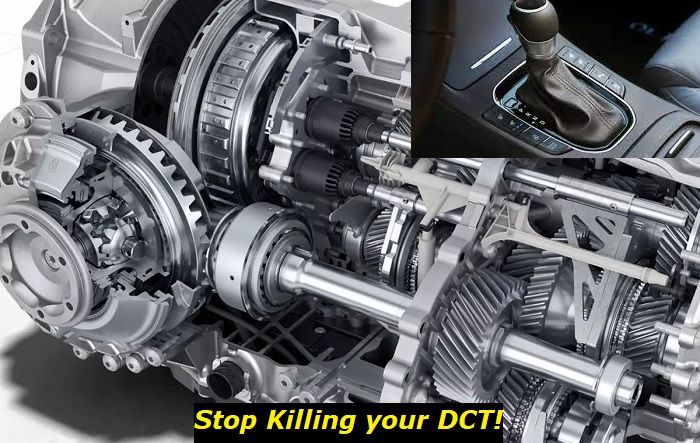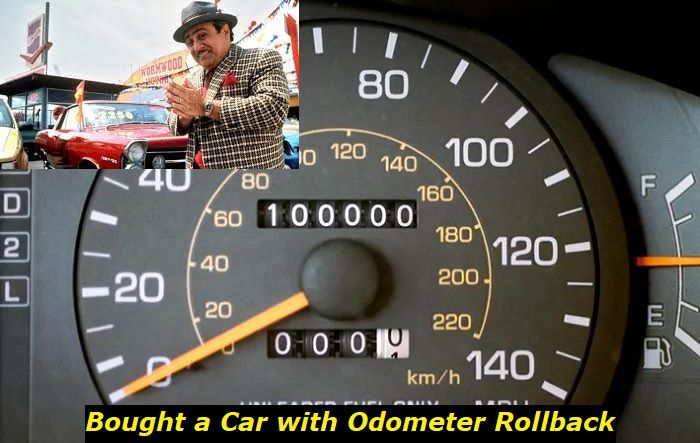The new Chevrolet Malibu is probably one of the most wanted family sedan cars in the US. With a huge drop in sales in 2021 due to COVID restrictions in production and microchip issues in GM factories, the Malibu, on average, sells more than a hundred thousand cars a year in the States. The current generation was first seen in 2016 and faced a facelift in 2019 but it still looks cool. Of course, we want the new-gen Malibu, but as of now, we are talking about the ninth generation.
Today, we'll tell you about the 1.5L Turbo LFV engine in the new Chevrolet Malibu which is the only non-hybrid option for this vehicle. We'll cover its durability and quality. And we'll also talk about the reasons to buy or not to buy the Chevy powered by this engine. It may seem like a crazy idea given Americans love big engines, but let's not rush with our conclusions.
.jpg)
Key features and my opinion about the engine
- Production years:2014-now
- Average lifespan of LFV:150,000-180,000 miles
- Fuel supply type:direct injection
- Power range:163-169 hp
- Fuel efficiency:good
- Engine block material:aluminum
- Engine reliability score:medium
- The most common problems:engine knocking, throttle pipes are weak, start-stop glitches, carbon buildup on intake valves, intercooler freezing.
The 1.5L Turbo engine by GM in the new Malibu - what do we know?
The Malibu is sold in many countries and has quite a lot of available engines including even a diesel version. But the US buyers have access to two versions: the 1.5L Turbo and also the 1.8L hybrid. The turbocharged engine is obviously more wanted because of its affordable price and pretty good specs. It's not perfect, but it looks decent in comparison with the offers from other manufacturers of family sedans.
The LFV engine belongs to the family of Small Gasoline Engines (SGE) by GM. The family embraces the majority of small-displacement engines with three or four cylinders that are now widely used in many popular General Motors vehicles. The engine has been here since 2016, so we know quite a lot about it.
Here's what you should remember:
- this is the 1.5-liter gasoline engine equipped with a turbocharger that offers decent power of 160 hp and a torque of 184 lb-ft;
- this is a direct-injection engine with a highly efficient fuel supply but some common issues for this type of engines;
- the engine is equipped with start-stop and several important ecological technologies that make it less durable than previous SGE versions;
- the powerplant has also been used in Buick LaCrosse and Envision, also Chinese MG cars use it as the main engine;
- the engine is all-aluminum, the timing system is driven by a chain, the redline of engine speed is only 6,500 RPM;
- reportedly, these engines use a very reliable Mitsubishi turbocharger (single-scroll) which is not really efficient but almost problem-free;
- after the facelift in 2019, all non-hybrid Malibus have been using the CVT transmission which is bad news for those who want durability;
- the claimed economy of the Malibu 1.5L Turbo engine is 27 MPG in the city and 35 MPG on highways - nothing special, we would say.
Well, on the one hand, the engine is pretty simple and doesn't contain a lot of doubtful technologies. But on the other hand, there are some modules that can unexpectedly fail and lead to very expensive repairs. We can't say that the engine is really reliable and can easily compete with any other engine in family sedans in the US.
We expected better fuel economy from the 1.5L engine but you should understand that it's quite powerful for its displacement. And also, the Malibu is not really light for this engine. That's why the economy is questionable.
How many miles will the Malibu 1.5L Turbo engine last?
In terms of durability, we can't make a certain guess because the data are absolutely different. We've heard from people who adore this engine and have already hit the 200K-mile mark on their 2016 Malibu. But we also saw broken Malibus with an engine replacement verdict from mechanics at 70K miles.
Overall, the average longevity of the 1.5L Turbo engine in the Malibu should be between 140,000 and 160,000 miles. Our estimates are based on the average lifespan of the engine components and also on some engineering features of these engines.
For example, the aluminum block may be damaged at 150,000 miles and can't be repaired. It can only be replaced and the price of this job should be more or less the same as the price for the new engine, so we consider this as death for the 1.5L Turbo.
The LFV engine (the GM code for this unit) also has several common issues that can kill the engine even earlier than it hits the 150,000-mile mark. If you don't pay attention to minor problems, they may quickly develop into fatal issues.
What are the common problems with the LFV 1.5L engine in the Malibu?
1. Limp mode at low temperatures
When it's freezing, your turbocharger may get frozen in this car as well as in almost all other small turbo engines made by GM these days. This is not a fatal issue and the engine will still start and go. But most likely, it will turn to limp mode and will limit performance to minimal horsepower to avoid failing fatally.
So, if you notice your Malibu is in the limp mode in winter, it's most likely because of the turbocharger.
2. Oil consumption when the mileage is high
High-mileage 1.5L Turbo engines are not your best friends. They may burn some oil and you will not learn about that on time. The oil pressure sensor is misleading in these cars and will light up that oil pressure light on the dash when it's too late.
So, you should check the oil level at least once a week. Do it more often if you notice black or grey smoke from the pipe of your car. If the oil level drops too low, the engine parts will overheat and grind each other - this is basically the engine's death.
3. Electronics and software issues
Lots of owners report ghost problems with these engines. They see the check engine light and arrange a visit to their dealer. But after a day, the check engine light is gone and there are no codes in the ECU. After a month, this can happen again.
There is one explanation: some sensors are faulty and keep tricking you. Also, there may be some issues with wiring or just with the software that keeps control over ECU and other electronics in the vehicle.
4. CVT failure
We understand that the CVT is not part of the engine but it's a part of the powerplant and it affects the engine's longevity. The CVT will last about 120,000 miles and then it usually fails. You will have a hard choice - to replace it or to sell the vehicle as a salvage car. And it's not obvious which option is better.
Replacing the CVT costs you a lot of money and there is not a lot of juice in your engine at 120K miles. Within a year or two, the engine will obviously fail and require expensive repair. So, the CVT is probably the worst choice of transmission for this car.
5. Injection issues
Direct-injection engines are known to have problems with carbon buildup and you should be ready to pay for valve cleaning in these engines now and then. But this is more of a special feature, not a common problem. The problem is with the injectors that are not really durable and may fail anytime.
Injectors are very expensive and hard to maintain. Also, the fuel pump may need your attention much sooner than you think. And you'll be surprised by the price of the pump.
How can you avoid issues and drive the Malibu much longer?
To prolong the life of your Chevy Malibu 1.5L Turbo LFV engine, you will have to maintain it every 10K miles or every year. Also, pay attention to the quality of oil and filters.
We can also name some specific maintenance procedures for this engine to help it live longer:
- check the valves once every two years and have them cleaned from carbon buildup;
- clean the fuel injectors once every two years to avoid their failure;
- control the oil level and never let it go below the minimum mark;
- pay attention to the timing chain and replace it at 100K miles to avoid jumps;
- control engine temperature and avoid overheating at all costs.
Also, you shouldn't tow anything with this engine. Towing will affect the CVT and also can overload the engine much. Aggressive driving is obviously not for this vehicle. If you want some sport, look at other vehicles, the current version of the Malibu is not made for high speed or fast acceleration.
Other than that, the engine is not bad. It won't live long and it will cause some minor issues sometimes. But we've seen much worse engines in modern vehicles.
About the authors
The CarAraC research team is composed of seasoned auto mechanics and automotive industry professionals, including individuals with advanced degrees and certifications in their field. Our team members boast prestigious credentials, reflecting their extensive knowledge and skills. These qualifications include: IMI: Institute of the Motor Industry, ASE-Certified Master Automobile Technicians; Coventry University, Graduate of MA in Automotive Journalism; Politecnico di Torino, Italy, MS Automotive Engineering; Ss. Cyril and Methodius University in Skopje, Mechanical University in Skopje; TOC Automotive College; DHA Suffa University, Department of Mechanical Engineering






Add comment